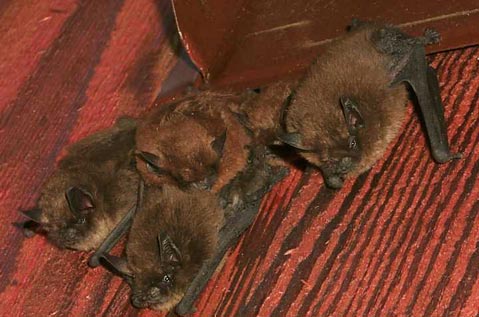Don’t Be Bat-Freaked on Halloween
Learning How to Love the Nearly 20 Bat Species Living in Santa Barbara, Ventura, and San Luis Obispo Counties

B-rated horror flicks portray bats drinking human blood and transforming into vampires. But as this Halloween approaches, bat experts from the state’s Fish & Game department work hard to demystify these benevolent flying creatures. This time of year, it quells people’s fears that bats will descend into their hair to make a nest or sneak in at night to give a rabies-infecting bite.
Our hometown bat expert Paul Collins, the curator of vertebrate zoology at the Santa Barbara Museum of Natural History, also fights the good fight clearing bats’ names. Like Fish & Game rangers, he knows that bats really are our friends, which is a good thing, because they are the second-largest group of mammals in the world after rodents. According to Collins, there are around 18 species of bats recorded in the tri-counties region of Ventura, Santa Barbara, and San Luis Obispo.
There are few people as familiar with the local bat population and their nocturnal ways as Collins. He spent two years conducting field studies on the distribution and habitat selection of bat species on Vandenberg Air Force Base. His research team aimed to discover which species and how many individuals of each species were hanging around, when they came around, and what types of roosts they preferred to call home. Through radio-tracking, among other techniques, they found the bats were equally at home in natural rock outcroppings and tree hollows as they were in abandoned buildings.
Collins admits bats also have a knack for settling down in occupied buildings, like peoples’ homes. “I get the most questions when bats come out of hibernation and people are coming into contact with them,” Collins explained. “I often get calls saying, ‘There is a bat in my roof, how do I get rid of it?'” The flying tenants often defecate and urinate on people’s porches, leaving a mess for the less-than-happy homeowner.
Despite their untidiness, bats bestow many benefits to their natural habitat and humans. Collins said, “Bats are one of those organisms in the environment that we tend not to see and don’t understand the importance of what they do.” He goes on to explain that bats fill an important niche in Santa Barbara, preying on a wide variety of insects, including pests that destroy crops we like to eat and mosquitoes that like to feed on us.
In order to live in harmony with these creatures – to benefit from their voracious insect consumption, while keeping one’s home clean and bat-free – Collins suggested sealing the access points where bats are likely to enter. He also recommended screening in porches that have tempting overhangs for bats seeking a roost. In addition, the Department of Fish & Game suggests getting a “bat box” and installing it on a tree a comfortable distance from your house. This gives the bats an alternative place to roost, keeping them around and insects down while giving the homeowner some breathing room.
So if you happen to see a bat flapping overhead this Halloween, don’t fear: Think friend, not foe. And if you do find a bat has moved in, never try to handle the animal on your own. Bats are wild animals and can bite if you attempt to handle them. Instead, contact the Santa Barbara Wildlife Care Network‘s hotline at 966-9005 instead.



